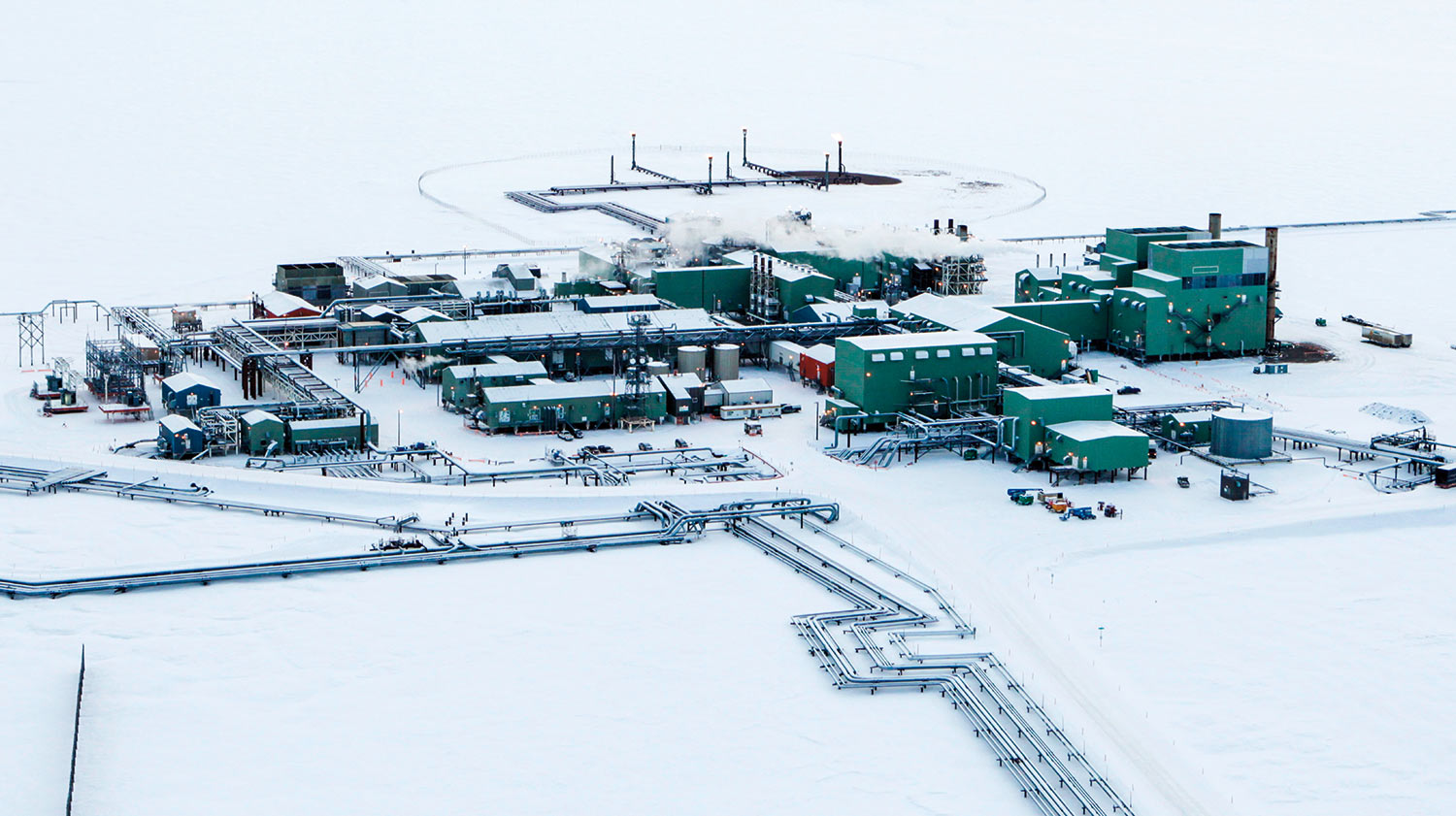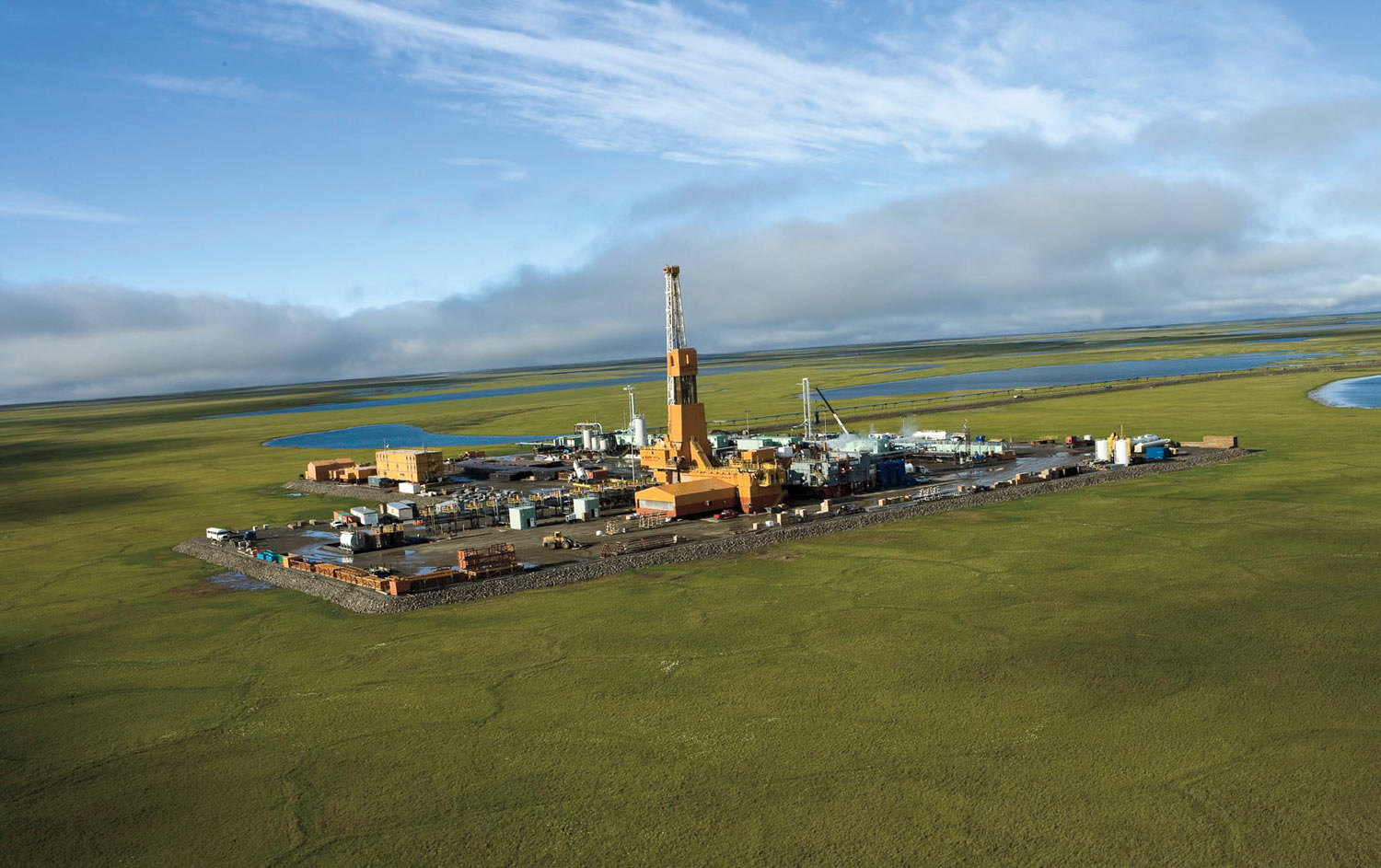Alyeska Pipeline Service Company
n January 2018, the Anchorage Economic Development Corporation (AEDC) projected that after an enduring economic recession, things were beginning to look up for the oil and gas sector. One year later, it appears AEDC’s forecasts were correct. Bolstered by new legislation, new discoveries, and increased levels of production, 2018 was a fairly fruitful year for the oil and gas industry.
“This is a watershed moment for Alaska and all of America,” US Senator Lisa Murkowski remarked in a December 2017 press release. “We have fought to open the 1002 Area for a very long time, and now our day has finally arrived.” Her sentiment was echoed by US Representative Don Young, who noted that he has advocated opening ANWR for the last thirty-seven years.
Although the 1002 Area is just one ten-thousandth of all of ANWR’s total acreage, it has the potential to bring an estimated 10.4 billion barrels of oil to market. According to Alaska Oil and Gas Association (AOGA) President and CEO Kara Moriarty, production is about ten to fifteen years away. However, in April 2018, the Bureau of Land Management said that it was beginning to prepare an environmental impact statement (EIS) for a leasing program in the 1002 Area.
In 2017, FERC ordered AGDC to evaluate Port MacKenzie in the Mat-Su Borough as an alternative location for the terminal of the Alaska LNG pipeline. AGDC complied, but in January 2018 the borough filed a complaint with FERC noting that AGDC had misidentified Port MacKenzie and subsequently evaluated the wrong location. AGDC turned its efforts toward the evaluation of the correction location of Port MacKenzie, and after several months of additional analysis, AGDC deemed the correct location inadequate, asserting again that Nikiski was best suited for the terminal. Not surprisingly, the Mat-Su Borough disagreed with AGDC’s assessment.
The Mat-Su Borough argued that AGDC presented “numerous factual errors and willfully misleading statements” to federal regulators and failed to perform “a good faith and unbiased analysis” of borough land at Port MacKenzie. AGDC responded by calling the Mat-Su Borough’s claim “baseless.”

Aerial view of ConocoPhillips Alaska’s Kuparuk operations.
ConocoPhillips
Aerial view of ConocoPhillips Alaska’s Kuparuk operations.
ConocoPhillips
For now, AGDC continues to work toward making its pitch to potential investors in early 2019. If all goes according to plan, AGDC hopes to begin construction in 2020 in Nikiski with liquefied natural gas (LNG) production estimated to begin in 2024.
The provision enabled companies to apply the tax credit to each barrel of oil production with the value increasing as oil prices sink. When Senate Bill 21 was signed into law, it dictated that the sliding scale could not be used to reduce a company’s taxes below a set minimum. During the first few years of the law, some companies were able to pay less than the minimum required through a loophole in the law’s language. In 2017, the loophole was closed via an advisory bulletin and it caused a ruckus within the industry.
SAExploration—a non-producing oil exploration company—had planned to sell its tax credits to another company that would then use SAExploration’s credits to reduce its tax bill. But the state’s tax bulletin now bars that practice, which has “drastically reduced” the value of SAExploration’s credits, the complaint states.
As of the writing of this article, a decision had not been reached by the state’s Superior Court.
The bill passed the Alaska House in early May and the Senate at the end of an extended legislative session in June. However, the sales were halted soon after the legislation passed due to a lawsuit filed that argues against the bill’s constitutionality.
A ruling on the case was anticipated to be made in November but as of mid-December, the state’s motion to dismiss the suit has not been addressed by the state’s Superior Court.

BP
BP
The move, according to Barrett, is an effort to simplify operations. After launching an initiative in 2017 to understand the necessary actions needed to keep TAPS technically and economically viable, Alyeska presented a strategy that was endorsed by TAPS owners.
“As we move implementation forward, we will apply sound personnel processes designed to provide fairness, respect, and support for affected employees,” Barrett assured officials.
The largest undeveloped, light-oil reservoir on the North Slope, the Liberty Project predicts to unearth an estimated 80 million to 150 million barrels of recoverable oil. Peak production of between 60,000 and 70,000 barrels per day is projected within two years of initial production, and the field has a life expectancy of fifteen to twenty years. The proposed nine-acre artificial gravel island would be housed in the shallow waters of the Beaufort Sea, about 20 miles east of Prudhoe Bay. A buried subsea pipeline would carry sales-grade crude oil to shore, to connect with the existing Badami pipeline.
According to Liberty Project Manager Mike Dunn, construction of the artificial island is set to take place in 2020 and 2021. Construction of the subsea pipeline is projected to begin in the winter of 2021, and Hilcorp plans to move the various modules to the island during the following summer, with the drilling rig being moved within that same summer timeframe. Startup of the facilities is planned for May 2023.
While BP remains the sole operator in the Prudhoe Bay oilfield, in July the company agreed to sell its 39.2 percent stake in the Kuparuk River Unit to ConocoPhillips in exchange for an increased share in the Clair field, which is part of BP’s North Sea operations in Scottish territorial waters.

ConocoPhillips
ConocoPhillips
The Kuparuk transactions were just a portion of an aggressive exploration pursuit made by ConocoPhillips in 2018.
In April, the company announced it had achieved a North American drilling record and two State of Alaska drilling records at drill site CD5 in the Colville River Unit on Alaska’s North Slope. With the help of the Doyon 19 drilling rig, ConocoPhillips drilled the longest horizontal lateral at 21,748 feet to claim the North American drilling record. Their two Alaska records were set with a total combined lateral length of 34,211 feet and total combined footage for a well at 42,993 feet. At the time of the records, CD5 was exceeding its original production target of 16,000 barrels per day.
Oil Search’s analysis suggests that the Nanushuk field and satellite fields contain approximately 500 million barrels of recoverable oil. Repsol, their joint venture partner, estimates that there are more than 1 billion barrels. For 2019, Oil Search plans to conduct further appraisal drilling to confirm the size of the resource. ![]()